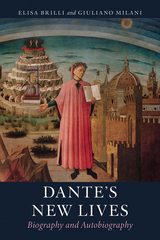66 start with S start with S

“There are many reasons for writing a biography of Semyon Frank. Quite apart from his philosophy, he lived a remarkable life. Born in Moscow in 1877, he was exiled from Soviet Russia in 1922 and died in London in 1950. The son of a Jewish doctor, he became a revolutionary Social Democrat in his teens and finished his life as a Neoplatonist Christian. One of the Russian revisionist Marxists, he was then involved in the Kadet Party during the 1905 revolution before breaking with active political activity and turning to philosophy. He lived in Petrograd through the First World War until September 1917, after which he went to Saratov, where he experienced the chaos of the Russian Civil War. Living in Germany after his exile, he witnessed the rise of Hitler in Berlin, left for France in a hurry in 1937, and spent part of the war hiding from the Gestapo in the Grenoble mountains. It was a life that encompassed a lot of history.
”Yet along with this, Frank was arguably Russia’s greatest twentieth-century philosopher. Indeed, V.V. Zen‘kovskii, the historian of Russian philosophy, considered Frank ’in strength of philosophic vision … the most outstanding among Russian philosophers generally — not merely among those who share his ideas.‘ For its lucidity, conciseness, systematic character, and unity, Zen’kovskii considered Frank’s system ‘ the highest achievement … of Russian philosophy.’ Doubtless, Zen‘kovskii’s assessment is disputable, but his remarks emphasize Frank’s stature in the Russian tradition. In the style of German idealism, Frank constructed a comprehensive philosophical system, which he believed offered a coherent alternative to materialism. He was deeply worried by the implications of epistemological relativism and constructed a system of metaphysics designed to link epistemology and ontology, to bridge the gulf between thought and being. In addition, he attempted to express the idea of a personal God in philosophical language. His system also embraced social philosophy, anthropology, and ethics.“
— from the Introduction by the author
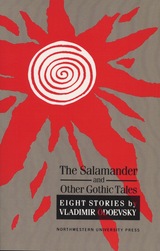
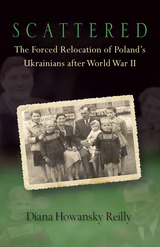
Born in the Lemko region of southeastern Poland, Petro, Melania, and Hania Pyrtej survived World War II only to be separated by political decisions over which they had no control. Petro relocated with his wife to Soviet Ukraine during the population exchange of 1944–46, while his sisters Melania and Hania were resettled to western Poland through Operation Vistula in 1947. As the Ukrainian Insurgent Army fought resettlement, the Polish government meanwhile imprisoned suspected sympathizers within the Jaworzno concentration camp. Melania, Reilly's maternal grandmother, eventually found her way to the United States during Poland's period of liberalization in the 1960s.
Drawing on oral interviews and archival research, Reilly tells a fascinating, true story that provides a bottom-up perspective and illustrates the impact of extraordinary historical events on the lives of ordinary people. Tracing the story to the present, she describes survivors' efforts to receive compensation for the destruction of their homes and communities.
Silver Medal for World History, Independent Publisher Book Awards
Finalist, Housatonic Book Awards
Finalist in History, Foreword Books of the Year

How does the excessive bureaucratization of central planning affect politics in communist countries? Mark Beissinger suggests an answer through this history of the Soviet Scientific Management movement and its contemporary descendants, raising at the same time broader questions about the political consequences of economic systems.
Beissinger traces the rise and decline of administrative strategies throughout Soviet history, focusing on the roles of managerial technique and disciplinary coercion. He argues that over-bureaucratization leads to a succession of national crises of effectiveness, which political leaders use to challenge the power of entrenched elites and to consolidate their rule. It also encourages leaders to resort to radical administrative strategies—technocratic utopias, mass mobilization, and discipline campaigns—and gives rise to a cycling syndrome, as similar problems and solutions reappear over time. Beissinger gives a new perspective and interpretation of Soviet history through the prism of organizational theory. He also provides a comprehensive history of the Soviet rationalization movement from Lenin to Gorbachev that describes the recurring attractions and tensions between politicians and management experts, as well as the reception accorded Western management techniques in the Soviet factory and management-training classroom.
Beissinger uses a number of unusual sources: the personal archive of Aleksei Gastev, the foremost Soviet Taylorist of the 1920s; published Soviet archival documents; unpublished Soviet government documents and dissertations on management science and executive training; interviews with Soviet management scientists; and the author's personal observations of managers attending a three-month executive training program in the Soviet Union. Beissinger's skillful handling of this singular material will attract the attention of political scientists, historians, and economists, especially those working in Soviet studies.
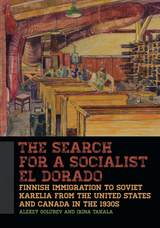
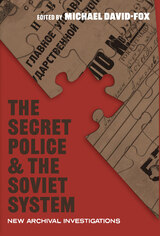
A Penetrating Exploration of the Soviet Secret Police Apparatus
Even more than thirty years after the dissolution of the Soviet Union, the role of the secret police in shaping culture and society in communist USSR has been difficult to study, and defies our complete understanding. In the last decade, the opening of non-Russian KGB archives, notably in Ukraine after 2015, has allowed scholars to explore state security organizations in ways not previously possible. Moving beyond well-known cases of high-profile espionage and repression, this study is the first to showcase research from a wide range of secret police archives in former Soviet republics and the countries of the former Soviet bloc—some of which are rapidly closing or becoming inaccessible once again. Rather than focusing on Soviet leadership, The Secret Police and the Soviet System integrates the secret police into studies of information, technology, economics, art, and ideology. The result is a state-of-the-art portrait of one of the world’s most notorious institutions, the legacies of which are directly relevant for understanding Vladimir Putin’s Russia today.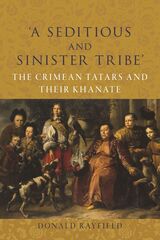
The Crimean Tatars were the Turkic-speaking native peoples of Crimea who established a powerful khanate in the 1440s, which remained in power until 1783. In this, the first history in English of this khanate for over one hundred years, eminent scholar Donald Rayfield shows that this misunderstood and much-feared nation was, in fact, a flourishing state with a vibrant literary culture, religious tolerance, a sophisticated constitution, and a prosperous economy. Rayfield’s book describes the establishment of the khanate, its reign, and its eventual fall, concluding with a vivid portrayal of the ruthless suppression of the Tatars—first by Russia and then the Soviet Union—and the final, effectively genocidal, invasion under Vladimir Putin.
This vibrant and ultimately tragic chronicle is essential reading for anyone interested in the background of the current war in Ukraine.
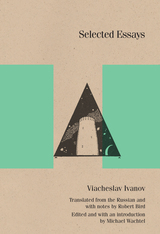
A poet, critic, and theoretician during the Silver Age of Russian poetry, at the turn of the twentieth century, Viacheslav Ivanov was dubbed "Viacheslav the Magnificent" by his contemporaries for his erudition, sumptuous and allusive poetry, and brilliant essays. He provided Russian Symbolism with theoretical underpinnings based on classical and biblical mythology, the aesthetics of music, philosophy ranging from Plato and Kant to Schopenhauer and Nietzsche, and a profound knowledge of classical and modern European poetry.
In choosing material for this volume of essays, Robert Bird and Michael Wachtel have covered a broad range of Ivanov's interests: the aesthetics of Symbolism, theater, culturological concerns, and on such influential figures of the period as Nietzsche, Solovyov, Tolstoy, and Scriabin. Also included are extensive notes on the essays in which classical, biblical, and poetic citations and allusions are identified, the aesthetic and theoretical contexts are clarified, and certain translation problems are briefly discussed. This volume provides valuable insight into the theory of Symbolism as it developed in Russia.
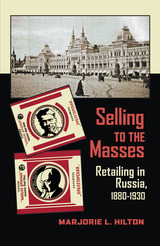
Marjorie L. Hilton presents a captivating history of consumer culture in Russia from the 1880s to the early 1930s. She highlights the critical role of consumerism as a vehicle for shaping class and gender identities, modernity, urbanism, and as a mechanism of state power in the transition from tsarist autocracy to Soviet socialism.
Beginning in the late nineteenth century, Russia witnessed a rise in mass production, consumer goods, advertising, and new retail venues such as arcades and department stores. These mirrored similar developments in other European countries and reflected a growing quest for leisure activities, luxuries, and a modern lifestyle. As Hilton reveals, retail commerce played a major role in developing Russian public culture—it affected celebrations of religious holidays, engaged diverse groups of individuals, defined behaviors and rituals of city life, inspired new interpretations of masculinity and femininity, and became a visible symbol of state influence and provision.
Through monarchies, revolution, civil war, and monumental changes in the political sphere, Russia’s distinctive culture of consumption was contested and recreated. Leaders of all stripes continued to look to the “commerce of exchange” as a key element in appealing to the masses, garnering political support, and promoting a modern nation.
Hilton follows the evolution of retailing and retailers alike, from crude outdoor stalls to elite establishments; through the competition of private versus state-run stores during the NEP; and finally to a system of total state control, indifferent workers, rationing, and shortages under a consolidating Stalinist state.
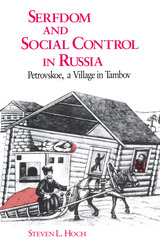


This book aims to correct that. Lee Farrow offers here a detailed account of just what the Alaska Purchase was, how it came about, its impact at the time, and more. Farrow shows why both America and Russia had plenty of good reasons to want the sale to occur, including Russia’s desire to let go of an unprofitable, hard-to-manage colony and the belief in the United States that securing Alaska could help the nation gain control of British Columbia and generate closer trade ties with Asia . Farrow also delves into the implications of the deal for foreign policy and international diplomacy far beyond Russia and the United States at a moment when the global balance of power was in question.
A thorough, readable retelling of a story we only think we know, Seward’s Folly will become the standard book on the Alaska Purchase.
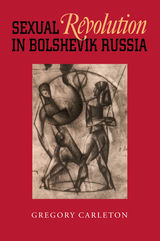
Gregory Carleton offers a comprehensive literary and cultural history of sex and society in the Soviet Union during the 1920s. The Bolshevik Revolution promised a total transformation of Russian society, down to its most intimate details. But in the years immediately following 1917, it was by no means clear how this would come about. Sex and sexuality became a crucial battleground for debates about the Soviet future, and literature emerged as a primary domain through which sex could be imagined and discussed.
Despite optimistic claims that bolshevism would overcome bourgeois depravity, the writings of the 1920s in all genres were awash in sexual adventure, promiscuity, various chauvinisms, date and gang rape, unwanted pregnancy, and sexually transmitted diseases, as well as sex-related alcohol abuse, depression, and suicide. In discussions about sex, party officials contradicted themselves, sociologists grappled with difficult social problems, and writers experimented in fictional form with modern identities and relationships.
Drawing on an uncommonly varied body of sources, including novels, journals, diaries, sociological research, public health brochures, surveys, and party documents-many examined here for the first time in English-Carleton reveals the dramatic, bizarre, and intriguing ways the sexual revolution was discussed and represented. Amidst this chaos, he discerns a historical process of codification and reaction, leading ultimately to the quelling of debate in the 1930s through the harsh dictates of Stalinism.
Sexual Revolution in Bolshevik Russia challenges Western writers who portray revolutionary Russia as either prudish or hedonistic by reconstructing a fuller picture of what circulated in Bolshevik culture and why. Carleton brings a complex human dimension to the subject, demonstrating that this controversy should not be viewed as a sideshow curiosity, but rather as a central aspect of the dramatic debates on early Soviet literature and culture.
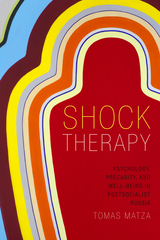

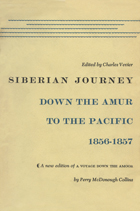
Perry McDonough Collins was the first American to journey through Siberia and down the 2,690-mile Amur River to the Pacific Ocean. In 1860 he wrote A Voyage Down the Amoor, an account of his adventures, and his book proved so popular that it was reissued in 1864. Siberian Journey consists of Collins’s original text framed by an interpretive introduction and explanatory notes by Charles Vevier, providing an extensive, first-hand account of Russia’s land and its people in the mid–nineteenth century.

This book traces the way of life of the village’s Turkic inhabitants, the Yakuts, from their arrival in the 1600s through czarist times and the Soviet era to the present day. As a native of the village, geographer Bella Bychkova Jordan enjoyed unparalleled access to its people and their stories, myths, humor, problems, and folklore. Viewed through the prism of cultural geography, this material forms the basis of a remarkable portrait of a people wresting a living from the land in one of the coldest and most isolated spots on Earth.
Published in collaboration with the Center for American Places.
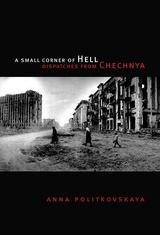
Anna Politkovskaya, a correspondent for the liberal Moscow newspaper Novaya gazeta, was the only journalist to have constant access to the region. Her international stature and reputation for honesty among the Chechens allowed her to continue to report to the world the brutal tactics of Russia's leaders used to quell the uprisings. A Small Corner of Hell: Dispatches from Chechnya is her second book on this bloody and prolonged war. More than a collection of articles and columns, A Small Corner of Hell offers a rare insider's view of life in Chechnya over the past years. Centered on stories of those caught-literally-in the crossfire of the conflict, her book recounts the horrors of living in the midst of the war, examines how the war has affected Russian society, and takes a hard look at how people on both sides are profiting from it, from the guards who accept bribes from Chechens out after curfew to the United Nations. Politkovskaya's unflinching honesty and her courage in speaking truth to power combine here to produce a powerful account of what is acknowledged as one of the most dangerous and least understood conflicts on the planet.

This collection of essays represents the results of more than twenty years of research by one of this country's foremost experts on Soviet sociology and psychology. Although Alex Inkeles covers a wide range of subjects, he has one primary purpose: to identify the main elements of the process of modernization in the Soviet social system. While he thus provides a broad description of Soviet institutions and the ways in which they function, his chief concern is to find the principles common to social change in all aspects of Soviet society and to determine if these principles underlie the same process in other countries, both those with and without a revolutionary tradition.
The author has divided his book into seven main sections: “Change and Continuity in Soviet Russia,” “The Psychology of Soviet Politics,” “Social Stratification,” “The Family, Church, and Ethnic Group,” “Mass Communications and Public Opinion,” “International Propaganda and Counterpropaganda,” and “Comparative Perspectives on the Future.”

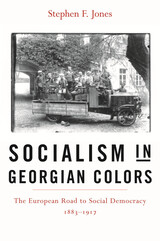
Georgian social democracy was the most successful social democratic movement in the Russian Empire. Despite its small size, it produced many of the leading revolutionary figures of 1917, including Irakli Tsereteli, Karlo Chkheidze, Noe Zhordania, and Joseph Stalin. In the first of two volumes, Stephen Jones writes the first history in English of this undeservedly neglected national movement, which represented one of the earliest examples of European social democracy at the turn of the twentieth century.
Georgian social democracy was part of the Russian social democracy from which Bolshevism and Menshevism emerged. But innovative theoretical programs and tactics led Georgian social democracy down an independent path. The powerful Georgian organization united all native classes behind it, and it set a remarkable precedent for many of the anti-colonial nationalist movements of the twentieth century. At the same time, Georgian social democracy was committed to a "European" path, a "third way" that attempted to combine grassroots democracy, private manufacturing, and private land ownership with socialist ideology.
One of the few Western historians fluent in Georgian, Jones fills major gaps in the history of revolutionary and national movements of the Russian Empire.
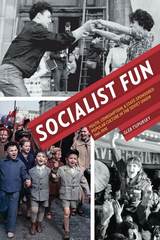
The primary local venues for Soviet culture were the tens of thousands of klubs where young people found entertainment, leisure, social life, and romance. Here sports, dance, film, theater, music, lectures, and political meetings became vehicles to disseminate a socialist version of modernity. The Soviet way of life was dutifully presented and perceived as the most progressive and advanced, in an attempt to stave off Western influences. In effect, socialist fun became very serious business. As Tsipursky shows, however, Western culture did infiltrate these activities, particularly at local levels, where participants and organizers deceptively cloaked their offerings to appeal to their own audiences. Thus, Soviet modernity evolved as a complex and multivalent ideological device.
Tsipursky provides a fresh and original examination of the Kremlin’s paramount effort to shape young lives, consumption, popular culture, and to build an emotional community—all against the backdrop of Cold War struggles to win hearts and minds both at home and abroad.
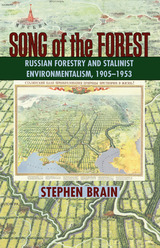
The Soviets are often viewed as insatiable industrialists who saw nature as a force to be tamed and exploited. Song of the Forest counters this assumption, uncovering significant evidence of Soviet conservation efforts in forestry, particularly under Josef Stalin. In his compelling study, Stephen Brain profiles the leading Soviet-era conservationists, agencies, and administrators, and their efforts to formulate forest policy despite powerful ideological differences.
By the time of the revolution of 1905, modern Russian forestry science had developed an influential romantic strand, especially prevalent in the work of Georgii Morozov, whose theory of “stand types” asked forest managers to consider native species and local conditions when devising plans for regenerating forests. After their rise to power, the Bolsheviks turned their backs on this tradition and adopted German methods, then considered the most advanced in the world, for clear-cutting and replanting of marketable tree types in “artificial forests.” Later, when Stalin’s Five Year Plan required vast amounts of timber for industrialization, forest radicals proposed “flying management,” an exaggerated version of German forestry where large tracts of virgin forest would be clear-cut. Opponents who still upheld Morozov’s vision favored a conservative regenerating approach, and ultimately triumphed by establishing the world’s largest forest preserve.
Another radical turn came with the Great Stalin Plan for the Transformation of Nature, implemented in 1948. Narrow “belts” of new forest planted on the vast Russian steppe would block drying winds, provide cool temperatures, trap moisture, and increase crop production. Unfortunately, planters were ordered to follow the misguided methods of the notorious Trofim Lysenko, and the resulting yields were abysmal. But despite Lysenko, agency infighting, and an indifferent peasant workforce, Stalin’s forestry bureaus eventually succeeded in winning many environmental concessions from industrial interests. In addition, the visionary teachings of Morozov found new life, ensuring that the forest’s song did not fall upon deaf ears.
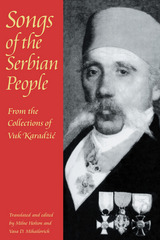
In the early nineteenth century, Vuk Karadzic, a Serb scholar and linguist, collected and eventually published transcriptions of the traditional oral poetry of the South Slavs. It was a monumental and unprecedented undertaking. Karadzic gathered and heard performances of the rich songs of Balkan peasants, outlaws, and professional singers and their rebel heroes. His four volumes constitute the classic anthology of Balkan oral poetry, treasured for nearly two centuries by readers of all literatures, and influential to such literary giants as Goethe, Merimee, Pushkin, Mickiewicz, and Sir Walter Scott.
This edition of the songs offers the most complete and authoritative translations ever assembled in English. Holton and Mihailovich, leading scholars of Slavic literature, have preserved here the unique meter and rhythm at the heart of Serbian oral poetry, as well as the idiom of the original singers. Extensive notes and comments aid the reader in understanding the poems, the history they record and the oral tradition that lies beneath them, the singers and their audience.
The songs contain seven cycles, identified here in sections titled: Songs Before History, Before Kosovo, the Battle of Kosovo, Marko Karadzic, Under the Turks, Songs of the Outlaws, and Songs of the Serbian Insurrection. The editors have selected the best known and most representative songs from each of the cycles. A complete biography is also provided.
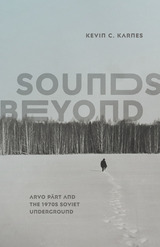
In Sounds Beyond, Kevin C. Karnes studies the interconnected alternative music and art scenes in the USSR during the second half of the 1970s, revealing the audacious origins of some of Estonian composer Arvo Pärt’s most famous music. Karnes shows how Pärt’s work was created within a vital yet forgotten culture of collective experimentation, the Soviet underground.
Mining archives and oral history from across the former USSR, Sounds Beyond carefully situates modes of creative experimentation within their late socialist contexts. In documenting Pärt’s work, Karnes reveals the rich creative culture that thrived covertly in the USSR and the network of figures that made underground performances possible: students, audio engineers, sympathetic administrators, star performers, and aspiring DJs. Sounds Beyond advances a new understanding of Pärt’s music as an expression of the aesthetic and religious commitments shared, nurtured, and celebrated by many in Soviet underground circles. At the same time, this story attests to the lasting power of Pärt’s music. Dislodging the mythology of the solitary creative genius, Karnes shows that Pärt’s work would be impossible without community.

The nineteenth-century novel is generally assumed to owe its basic social imaginaries to the ideologies, institutions, and practices of modern civil society. In Sovereign Fictions, Ilya Kliger asks what happens to the novel when its fundamental sociohistorical orientation is, as in the case of Russian realism, toward the state. Kliger explores Russian realism’s distinctive construals of sociality through a broad range of texts from the 1830s to the 1870s, including major works by Tolstoy, Dostoevsky, Gogol, Pushkin, Lermontov, Goncharov, and Turgenev, and several lesser-known but influential books of the period, including Alexander Druzhinin’s Polinka Saks (1847), Aleksei Pisemsky’s One Thousand Souls (1858), and Vasily Sleptsov’s Hard Times (1865). Challenging much current scholarly consensus about the social dynamics of nineteenth-century realist fiction, Sovereign Fictions offers an important intervention in socially inflected theories of the novel and in current thinking on representations of power and historical poetics.

This book addresses different aspects of the Soviet army’s twenty-year presence in Czechoslovakia between 1968 and 1991. It explores the circumstances of the Soviet settling in the country, immediately related to the invasion of the Warsaw Pact armies in August 1968; its active interference in the political developments in the early stage of the “normalization” era; and the universal support provided by the normalization era regime. It examines the darker side of this support when the constant favoring of Soviet interests—often to the detriment of the local population and the environment—went hand in hand with the resignation of the Czechoslovak state to lawfulness and the execution of effective administration on its territory.
Based on extensive local and national primary sources, the volume describes the often problematic coexistence of the Soviet garrisons and local inhabitants, who did not have sufficient protection at the central level. In this context, it points out the contradictory logic that framed the mutual coexistence: the official policy of friendship on the one hand and the counter-intelligence protection of Soviet military premises on the other. Marie Cerná records the traces that the presence of the Soviet army left in the collective memory and examines the circumstances of its departure from the country in 1990 and 1991, which began immediately after the change of the political regime. She presents the long-term presence of the Soviet army as a fundamentally political and politicized matter, which was first the subject of power controversies and later of propaganda and intentional manipulation.
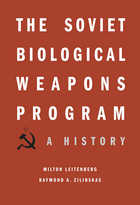
Russian officials claim today that the USSR never possessed an offensive biological weapons program. In fact, the Soviet government spent billions of rubles and hard currency to fund a hugely expensive weapons program that added nothing to the country’s security. This history is the first attempt to understand the broad scope of the USSR’s offensive biological weapons research—its inception in the 1920s, its growth between 1970 and 1990, and its possible remnants in present-day Russia. We learn that the U.S. and U.K. governments never obtained clear evidence of the program’s closure from 1990 to the present day, raising the critical question whether the means for waging biological warfare could be resurrected in Russia in the future.
Based on interviews with important Soviet scientists and managers, papers from the Soviet Central Committee, and U.S. and U.K. declassified documents, this book peels back layers of lies, to reveal how and why Soviet leaders decided to develop biological weapons, the scientific resources they dedicated to this task, and the multitude of research institutes that applied themselves to its fulfillment. We learn that Biopreparat, an ostensibly civilian organization, was established to manage a top secret program, code-named Ferment, whose objective was to apply genetic engineering to develop strains of pathogenic agents that had never existed in nature. Leitenberg and Zilinskas consider the performance of the U.S. intelligence community in discovering and assessing these activities, and they examine in detail the crucial years 1985 to 1992, when Mikhail Gorbachev’s attempts to put an end to the program were thwarted as they were under Yeltsin.
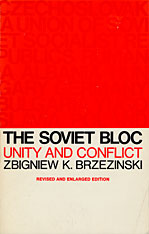
This is the first full-length study of relations among the communist states. The study explores the implications of the status of Yugoslavia and China, the significance of the Hungarian revolution and the position of Poland in the Soviet bloc, and clarifies the Khrushchev–Gomulka clash of 1956 and the complex role of Tito. Zbigniew Brzezinski emphasizes the role of ideology and power in the relations among the communist states, contrasting bloc relations and the unifying role of Soviet power under Stalin with the present situation. He suggests that conflicts of interest among the ruling elites will result either in ideological disputes or in weakening the central core of the ideology, leading to a gradual decline of unity among the Communist states.
The author, while on leave from his post as Professor and Director of the Research Institute on Communist Affairs, Columbia University, and serving on the U.S. State Department’s Policy Planning Council, has revised and updated his important study and added three new chapters on more recent developments. He gives particular attention to the Sino–Soviet dispute.
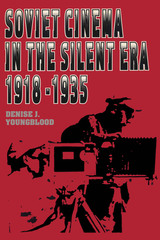
The golden age of Soviet cinema, in the years following the Russian Revolution, was a time of both achievement and contradiction, as reflected in the films of Eisenstein, Pudovkin, and Kuleshov. Tensions ran high between creative freedom and institutional constraint, radical and reactionary impulses, popular and intellectual cinema, and film as social propaganda and as personal artistic expression. In less than a decade, the creative ferment ended, subjugated by the ideological forces that accompanied the rise of Joseph Stalin and the imposition of the doctrine of Socialist Realism on all the arts.
Soviet Cinema in the Silent Era, 1918–1935 records this lost golden age. Denise Youngblood considers the social, economic, and industrial factors that influenced the work of both lesser-known and celebrated directors. She reviews all major and many minor films of the period, as well as contemporary film criticism from Soviet film journals and trade magazines. Above all, she captures Soviet film in a role it never regained—that of dynamic artform of the proletarian masses.

There is no better key to the strengths and weaknesses of the Soviet social system than Soviet law. Here in English translation is the Criminal Code and Code of Criminal Procedure of the largest of the fifteen Soviet Republics—containing the basic criminal law of the Soviet Union and virtually the entire criminal law applicable in Russia—and the Law on Court Organization. These two codes and the Law, which went into effect o January 1, 1961, are among the chief products of the Soviet law reform movement which began after Stalin’s death, and are a concrete reflection of the effort to establish legality and prevent a return to Stalinist arbitrariness and terror.
In a long introductory essay Harold Berman, a leading authority on Soviet law, stresses the extent to which the codes are expressed in authentic soviet legal language, based in part on the pre-Revolutionary Russian past but oriented to Soviet concepts, conditions, and policies. He outlines the historical background of the new codes, with a detailed listing of the major changes reflected in them, interprets their significance, places them within the system of Soviet law as a whole, and discusses some of the principal similarities and differences between Soviet criminal law and procedure and that of Western Europe and of the United States.
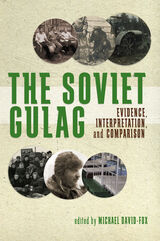
Still, the scale and scope of the Soviet Gulag was unprecedented. Intrinsic to Stalinist modernization, the Gulag was tasked with the construction of massive public works, scientific and engineering projects, and such mundane work as road repairs. Along with the collectivization of agriculture, the Soviet economy (including its military exertions in World War II) was in large part dependent on compulsory labor. The camp system took on an outsized economic significance, and the vast numbers of people taken in by zealous secret police were meant to fulfill material, not just political, goals. While the Soviet system lacked the explicitly dedicated extermination camps of its Nazi counterpart, it did systematically extract work from inmates to the verge of death then cynically “released” them to reduce officially reported mortality rates.
In an original turn, the book offers a detailed consideration of the Gulag in the context of the similar camps and systems of internment. Chapters are devoted to the juxtaposition of nineteenth-century British concentration camps in Africa and India, the Tsarist-era system of exile in Siberia, Chinese and North Korean reeducation camps, the post-Soviet penal system in the Russian Federation, and of course the infamous camp system of Nazi Germany. This not only reveals the close relatives, antecedents, and descendants of the Soviet Gulag—it shines a light on a frighteningly widespread feature of late modernity.
Overall, The Soviet Gulag offers fascinating new interpretations of the interrelationship and importance of the Gulag to the larger Soviet political and economic system, and how they were in fact parts of the same entity.
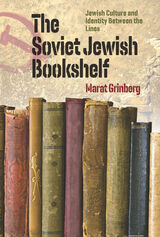
In The Soviet Jewish Bookshelf, Marat Grinberg argues that in an environment where Judaism had been all but destroyed, and a public Jewish presence routinely delegitimized, reading uniquely provided many Soviet Jews with an entry to communal memory and identity. The bookshelf was both a depository of selective Jewish knowledge and often the only conspicuously Jewish presence in their homes. The typical Soviet Jewish bookshelf consisted of a few translated works from Hebrew and numerous translations from Yiddish and German as well as Russian books with both noticeable and subterranean Jewish content. Such volumes, officially published, and not intended solely for a Jewish audience, afforded an opportunity for Soviet Jews to indulge insubordinate feelings in a largely safe manner. Grinberg is interested in pinpointing and decoding the complex reading strategies and the specifically Jewish uses to which the books on the Soviet Jewish bookshelf were put. He reveals that not only Jews read them, but Jews read them in a specific way.
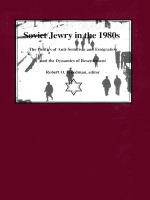

During the Cold War, the political leadership of the Soviet Union avidly sought intelligence about its main adversary, the United States. Although effective on an operational level, Soviet leaders and their intelligence chiefs fell short when it came to analyzing intelligence. Soviet leaders were often not receptive to intelligence that conflicted with their existing beliefs, and analysts were reluctant to put forward assessments that challenged ideological orthodoxy.
There were, however, important changes over time. Ultimately the views of an enlightened Soviet leader, Gorbachev, trumped the ideological blinders of his predecessors and the intelligence service’s dedication to an endless duel with their ideologically spawned “main adversary," making it possible to end the Cold War.
Raymond Garthoff draws on over five decades of personal contact with Soviet diplomats, intelligence officers, military leaders, and scholars during his remarkable career as an analyst, senior diplomat, and historian. He also builds on previous scholarship and examines documents from Soviet and Western archives. Soviet Leaders and Intelligence offers an informed and highly readable assessment of how the Soviets understood—and misunderstood—the intentions and objectives of their Cold War adversary.

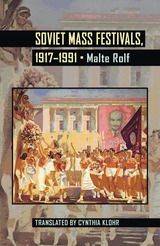
Mass festivals were a trademark of twentieth-century authoritarianism, as seen in fascist Italy, Nazi Germany, and elsewhere. But nowhere was this phenomenon more prevalent than in the Soviet Union. Despite being a dominant feature of Soviet culture, these public spectacles have been largely overlooked as objects of study by historians.
Originally published in German, Malte Rolf’s highly acclaimed work examines the creation and perpetuation of large-scale celebrations such as May Day, the anniversary of the October Revolution, Harvest Day, and others throughout the Soviet era. He chronicles the overt political agendas, public displays of power, forced participation, and widespread use of these events in the Soviet drive to eradicate existing cultural norms and replace them with new icons of Soviet ideology. Rolf shows how the new Red Calendar became an essential tool in redefining celebrations in the Soviet Union.
Rolf traces the roots of Soviet mass festivals in disparate multiethnic celebrations, protests, and street marches during the late imperial era. He then contrasts these with postrevolutionary events that sought to dissolve ethnic rituals and unify the masses. By the end of the civil war, the Bolsheviks had a well-defined calendar of events and began to dictate the forms of public celebration in accordance with party rhetoric. In distant regions, organizers attempted to follow the models of Moscow and Leningrad, despite budgetary constraints and local resistance. In many outlying areas a hybridization of events developed as local customs merged with party mandates. People often made use of official holidays to adopt their own agendas, yet continued to follow the line of an official Soviet culture. Mass festivals were thus an important tool for Sovietizing the cultural landscape.
After the Second World War, the Soviets exported their festival culture to Eastern Europe and the Baltic states, which resulted in a melding of Soviet guidelines with national cultural forms. Additionally, Rolf compares and contrasts Soviet mass spectacles with mass events in Italy, Germany, and the United States to reveal their similar influence despite divergent political, cultural, and social systems.
In the Soviet Union, mass festivals continued through the time of Khrushchev, Brezhnev, and up until perestroika, despite their fading political impact. Rolf finds that in the end, Soviet celebrations became effectively ingrained in Russia’s post-Soviet national memory, which ironically was the intent of the original festival planners.
As their woefully backward economy continues to crumble, much of the Soviet population remains indifferent, if not downright hostile, to the idea of reform. This phenomenon, so different from the Solidarity movement in Poland or the velvet revolution in Czechoslovakia, has been explained in terms of a “social contract”—a tacit agreement between the post-Stalin regime and the working class whereby the state provided economic and social security in return for the workers' political compliance. This book is the first critical assessment of the likelihood and implications of such a contract.
Linda Cook pursues the idea from Brezhnev's day to our own, and considers the constraining effect it may have had on Gorbachev's attempts to liberalize the Soviet economy. In case studies on job security, retail price stability, and social service subsidies, Cook identifies points at which leaders had to make critical decisions—to commit more resources or to abandon other policies at significant cost—in order to maintain the contract. The pattern that emerges attests to the validity of the social contract thesis for the Brezhnev period. At the same time, Cook's analysis points to several important factors, such as the uneven distribution of benefits, that help explain why labor unrest and activism have varied dramatically from sector to sector in recent years.
Ultimately, these case studies reveal, particularly for the Gorbachev period, deep conflicts between the old contract and the requisites of economic reform. Cook extends her analysis into the Yeltsin period to show how the democratizing state dealt weakly with labor's demands, seeking to stabilize labor relations with an inappropriate corporate structure. In the end, mobilized labor contributed greatly to the pressures that undermined Gorbachev's regime, and remained an obstacle to economic reform through the early months of Yeltsin's Russia.
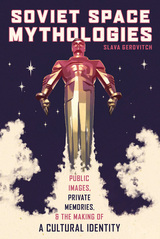
From the start, the Soviet human space program had an identity crisis. Were cosmonauts heroic pilots steering their craft through the dangers of space, or were they mere passengers riding safely aboard fully automated machines? Tensions between Soviet cosmonauts and space engineers were reflected not only in the internal development of the space program but also in Soviet propaganda that wavered between praising daring heroes and flawless technologies. Soviet Space Mythologies explores the history of the Soviet human space program within a political and cultural context, giving particular attention to the two professional groups—space engineers and cosmonauts—who secretly built and publicly represented the program. Drawing on recent scholarship on memory and identity formation, this book shows how both the myths of Soviet official history and privately circulating counter-myths have served as instruments of collective memory and professional identity. These practices shaped the evolving cultural image of the space age in popular Soviet imagination. Soviet Space Mythologies provides a valuable resource for scholars and students of space history, history of technology, and Soviet (and post-Soviet) history.
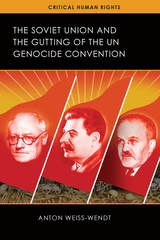
Based on extensive archival research, Anton Weiss-Wendt reveals in detail how the political aims of the superpowers rendered the convention a weak instrument for addressing abuses against human rights. The Kremlin viewed the genocide treaty as a political document and feared repercussions. What the Soviets wanted most was to keep the subjugation of Eastern Europe and the vast system of forced labor camps out of the genocide discourse. The American Bar Association and Senate Committee on Foreign Relations, in turn, worried that the Convention contained vague formulations that could be used against the United States, especially in relation to the plight of African Americans. Sidelined in the heated discussions, Weiss-Wendt shows, were humanitarian concerns for preventing future genocides.
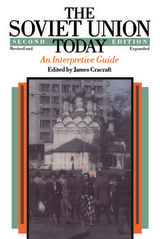
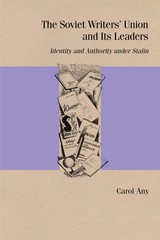
Winner, University of Southern California Book Prize in Literary and Cultural Studies
The Soviet Writers’ Union offered writers elite status and material luxuries in exchange for literature that championed the state. This book argues that Soviet ruler Joseph Stalin chose leaders for this crucial organization, such as Maxim Gorky and Alexander Fadeyev, who had psychological traits he could exploit. Stalin ensured their loyalty with various rewards but also with a philosophical argument calculated to assuage moral qualms, allowing them to feel they were not trading ethics for self‑interest.
Employing close textual analysis of public and private documents including speeches, debate transcripts, personal letters, and diaries, Carol Any exposes the misgivings of Writers’ Union leaders as well as the arguments they constructed when faced with a cognitive dissonance. She tells a dramatic story that reveals the interdependence of literary policy, communist morality, state‑sponsored terror, party infighting, and personal psychology. This book will be an important reference for scholars of the Soviet Union as well as anyone interested in identity, the construction of culture, and the interface between art and ideology.
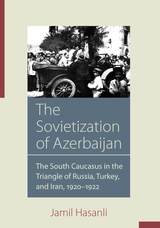
World War I and the fall of tsarist Russia brought brief independence to Azerbaijan, but by 1920 the Bolshevik revolution pushed south with the twofold purpose of accessing the oil-rich fields near Baku on the Caspian Sea and spreading communism into the Caucasus. Azerbaijan, the richest and earliest significant source of oil in the world, was the first republic in the South Caucasus occupied by the Red Army, which then advanced into neighboring Armenia and Georgia. Pulling from confidential, newly accessed archives, Hasanli describes Soviet Russia’s aggressive policy toward the three South Caucasian nations, which led to their absorption into the USSR by the end of 1922.
The book highlights the Caucasian peoples’ struggle to retain political independence against Soviet Russia and an international cast that included European powers wanting to retain petroleum concessions; Kemalist Turkey, which claimed special ties to the Turkic Azeris; and Iran, which controlled South Azerbaijan and was thus a possible route of expansion eastward for Bolshevik movement. The author also considers the impact on Azerbaijani-Armenian relations of the first two years of Sovietization and explains how Azerbaijan provided space for Bolshevik experiments. Throughout his book, Hasanli illuminates the tragedy of the complex, confused period of Sovietization of the South Caucasus.
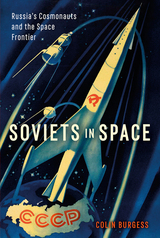
In this deeply researched chronology, Colin Burgess describes the then Soviet Union’s extraordinary success in the pioneering years of space exploration. Within a decade, the Soviets not only launched the world’s first satellite, Sputnik, in 1957, but they also were the first to send an animal and a human being into Earth orbit. In the years that followed, their groundbreaking missions sent a woman into space, launched a three-man spacecraft, and included the first person to walk in space. Six decades on from the historic spaceflight of cosmonaut Yuri Gagarin, Burgess guides us through the amazing achievements of Russia’s spaceflight program through to the present day, introducing the men and women who have flown the missions that drive us to delve ever deeper into the wonders and complexities of the cosmos.
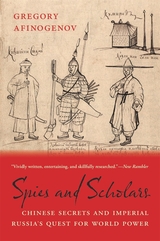
A Financial Times Best Book of the Year
The untold story of how Russian espionage in imperial China shaped the emergence of the Russian Empire as a global power.
From the seventeenth to the nineteenth century, the Russian Empire made concerted efforts to collect information about China. It bribed Chinese porcelain-makers to give up trade secrets, sent Buddhist monks to Mongolia on intelligence-gathering missions, and trained students at its Orthodox mission in Beijing to spy on their hosts. From diplomatic offices to guard posts on the Chinese frontier, Russians were producing knowledge everywhere, not only at elite institutions like the Academy of Sciences in St. Petersburg. But that information was secret, not destined for wide circulation.
Gregory Afinogenov distinguishes between the kinds of knowledge Russia sought over the years and argues that they changed with the shifting aims of the state and its perceived place in the world. In the seventeenth century, Russian bureaucrats were focused on China and the forbidding Siberian frontier. They relied more on spies, including Jesuit scholars stationed in China. In the early nineteenth century, the geopolitical challenge shifted to Europe: rivalry with Britain drove the Russians to stake their prestige on public-facing intellectual work, and knowledge of the East was embedded in the academy. None of these institutional configurations was especially effective in delivering strategic or commercial advantages. But various knowledge regimes did have their consequences. Knowledge filtered through Russian espionage and publication found its way to Europe, informing the encounter between China and Western empires.
Based on extensive archival research in Russia and beyond, Spies and Scholars breaks down long-accepted assumptions about the connection between knowledge regimes and imperial power and excavates an intellectual legacy largely neglected by historians.
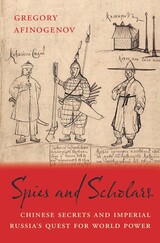
A Financial Times Book of the Year
Gold Medal in World History, Independent Publisher Book Awards
“Superb…At once a history of science, of empire, and of espionage, the book traces the rise of the Russian empire as a putative rival to Qing dynasty China in the Far East. Afinogenov has chosen a genuinely compelling cast of characters to populate this story of imperial intrigue.”—New Rambler
“The history of Sino-Russian relations appears in a much-altered light thanks to Gregory Afinogenov’s impressive new book…It is a little-known story, and [he] tells it beautifully.”—Tony Barber, Financial Times
“Reads like a detective novel…a tour de force that offers new information about the rise of empires and the globalization of the world.”—Journal of Jesuit Studies
Beginning in the seventeenth century, Russian officials made a concerted effort to collect information about the Qing dynasty in China. From diplomatic missions in the Forbidden City to remote outposts on the border, Russian spies and scholars collected trade secrets, recipes for porcelain, and gossip about the country and its leaders—but the information was secret, not destined for wide circulation.
Focused at first on the Siberian frontier, tsarist bureaucrats relied on spies, some of whom were Jesuit scholars stationed in China. When their attention shifted to Europe in the nineteenth century, they turned to more public-facing means to generate knowledge, including diplomatic and academic worlds, which would ultimately inform the broader encounter between China and Western empires. Peopled with a colorful cast of characters and based on extensive archival research in Russia and beyond, Spies and Scholars is a dramatic tale of covert machinations that breaks down long-accepted assumptions about the connection between knowledge and imperial power.
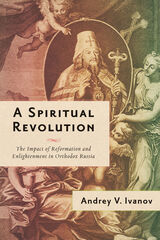
Embedded with lively portrayals of historical actors and vivid descriptions of political details, A Spiritual Revolution is the first large-scale effort to fully identify exactly how Western progressive thought influenced the Russian Church. These new ideas played a foundational role in the emergence of the country as a modernizing empire and the rise of the Church hierarchy as a forward-looking agency of institutional and societal change. Ivanov addresses this important debate in the scholarship on European history, firmly placing Orthodoxy within the much wider European and global continuum of religious change.
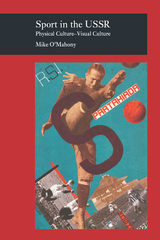
The Soviet state sponsored countless programs to promote sporting activities, even constructing a new term, fizkultura, to describe sports culture.
With Sport in the USSR, Mike O’Mahony asserts that the popular image of fizkultura was as dependent on its presentation as it was on its actual practice. Images of vigorous Soviet sportsmen and women were constantly evoked in literature, film, and folk songs; they frequently appeared on the badges and medals of various work associations and even on plates and teapots. Several major artists, in fact, made their careers out of vivid representations of sports.
O’Mahony further examines the role that fizkultura played in the formulation of the novyi chelovek, or Soviet New Person, arguing that these images of the sporting life not only promoted the existence of this national being but also articulated the process of transformation that could bring him or her into existence. Fizkultura, O’Mahony claims,became a civic duty alongside state labor drives and military service.
Sport in the USSR is a fascinating addition to current debates in the fields of sociology, popular culture, and Russian history.

Overthrowing the conventional image of Stalin as an uneducated political administrator inexplicably transformed into a pathological killer, Robert Service reveals a more complex and fascinating story behind this notorious twentieth-century figure. Drawing on unexplored archives and personal testimonies gathered from across Russia and Georgia, this is the first full-scale biography of the Soviet dictator in twenty years.
Service describes in unprecedented detail the first half of Stalin's life--his childhood in Georgia as the son of a violent, drunkard father and a devoted mother; his education and religious training; and his political activity as a young revolutionary. No mere messenger for Lenin, Stalin was a prominent activist long before the Russian Revolution. Equally compelling is the depiction of Stalin as Soviet leader. Service recasts the image of Stalin as unimpeded despot; his control was not limitless. And his conviction that enemies surrounded him was not entirely unfounded.
Stalin was not just a vengeful dictator but also a man fascinated by ideas and a voracious reader of Marxist doctrine and Russian and Georgian literature as well as an internationalist committed to seeing Russia assume a powerful role on the world stage. In examining the multidimensional legacy of Stalin, Service helps explain why later would-be reformers--such as Khrushchev and Gorbachev--found the Stalinist legacy surprisingly hard to dislodge.
Rather than diminishing the horrors of Stalinism, this is an account all the more disturbing for presenting a believable human portrait. Service's lifetime engagement with Soviet Russia has resulted in the most comprehensive and compelling portrayal of Stalin to date.
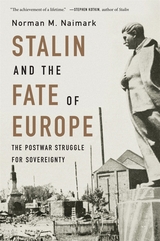
Winner of the Norris and Carol Hundley Award
Winner of the U.S.–Russia Relations Book Prize
A Financial Times Best History Book of the Year
The Cold War division of Europe was not inevitable—the acclaimed author of Stalin’s Genocides shows how postwar Europeans fought to determine their own destinies.
Was the division of Europe after World War II inevitable? In this powerful reassessment of the postwar order in Europe, Norman Naimark suggests that Joseph Stalin was far more open to a settlement on the continent than we have thought. Through revealing case studies from Poland and Yugoslavia to Denmark and Albania, Naimark recasts the early Cold War by focusing on Europeans’ fight to determine their future.
As nations devastated by war began rebuilding, Soviet intentions loomed large. Stalin’s armies controlled most of the eastern half of the continent, and in France and Italy, communist parties were serious political forces. Yet Naimark reveals a surprisingly flexible Stalin, who initially had no intention of dividing Europe. During a window of opportunity from 1945 to 1948, leaders across the political spectrum, including Juho Kusti Paasikivi of Finland, Wladyslaw Gomulka of Poland, and Karl Renner of Austria, pushed back against outside pressures. For some, this meant struggling against Soviet dominance. For others, it meant enlisting the Americans to support their aims.
The first frost of Cold War could be felt in the tense patrolling of zones of occupation in Germany, but not until 1948, with the coup in Czechoslovakia and the Berlin Blockade, did the familiar polarization set in. The split did not become irreversible until the formal division of Germany and establishment of NATO in 1949. In illuminating how European leaders deftly managed national interests in the face of dominating powers, Stalin and the Fate of Europe reveals the real potential of an alternative trajectory for the continent.

A Financial Times Best Book of the Year
Winner of the Norris and Carol Hundley Award
Winner of the US–Russia Relations Book Prize
“The achievement of a lifetime.”
—Stephen Kotkin, author of Stalin
“Naimark has few peers as a scholar of Stalinism, the Soviet Union and 20th-century Europe, and his latest work Stalin and the Fate of Europe is one of his most original and interesting.”
—Financial Times
“A timely and instructive account not merely of our own history but also of our fractious, unsettling present.”
—Daniel Beer, The Guardian
“Adds an abundance of fresh knowledge to a time and place that we think we know, clarifying the contours of Soviet–American conflict by skillfully enriching the history of postwar Europe.”
—Timothy Snyder, author of Bloodlands
Was the division of Europe after World War II inevitable? In this powerful reassessment of the postwar order, Norman Naimark suggests that Stalin was far more open to a settlement than we have thought. Through revealing case studies from Poland and Yugoslavia to Finland and Albania, Naimark recasts the early Cold War by focusing on Europeans’ fight to determine their future.
With Western occupation forces in central Europe and Soviet forces controlling most of the continent’s eastern half, European leaders had to nimbly negotiate outside pressures. For some, this meant repelling Soviet dominance. For others, it meant enlisting the Americans to support their aims. Revealing an at times surprisingly flexible Stalin and showing European leaders deftly managing their nations’ interests, Stalin and the Fate of Europe uncovers the lost potential of an alternative trajectory before 1949, when the Cold War split became irreversible.
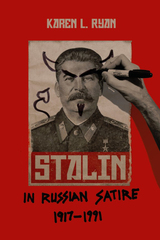
Examining works from the 1917 Revolution to the fall of the Soviet Union in 1991, Karen L. Ryan reveals how satirical treatments of Stalin often emphasize his otherness, distancing him from Russian culture. Some satirists portray Stalin as a madman. Others show him as feminized, animal-like, monstrous, or diabolical. Stalin has also appeared as the unquiet dead, a spirit that keeps returning to haunt the collective memory of the nation. While many writers seem anxious to exorcise Stalin from the body politic, for others he illuminates the self in disturbing ways. To what degree Stalin was and is “in us” is a central question of all these works. Although less visible than public trials, policy shifts, or statements of apology, Russian satire has subtly yet insistently participated in the protracted process of de-Stalinization.
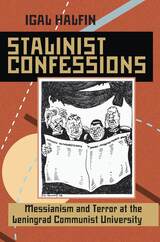
During Stalin's Great Terror, accusations of treason struck fear in the hearts of Soviet citizens-and lengthy imprisonment or firing squads often followed. Many of the accused sealed their fates by agreeing to confessions after torture or interrogation by the NKVD. Some, however, gave up without a fight.
In Stalinist Confessions, Igal Halfin investigates the phenomenon of a mass surrender to the will of the state. He deciphers the skillfully rendered discourse through which Stalin defined his cult of personality and consolidated his power by building a grassroots base of support and instilling a collective psyche in every citizen. By rooting out evil (opposition) wherever it hid, good communists could realize purity, morality, and their place in the greatest society in history. Confessing to trumped-up charges, comrades made willing sacrifices to their belief in socialism and the necessity of finding and making examples of its enemies.
Halfin focuses his study on Leningrad Communist University as a microcosm of Soviet society. Here, eager students proved their loyalty to the new socialism by uncovering opposition within the University. Through their meetings and self-reports, students sought to become Stalin's New Man.
Using his exhaustive research in Soviet archives including NKVD records, party materials, student and instructor journals, letters, and newspapers, Halfin examines the transformation in the language of Stalinist socialism. From an initial attitude that dismissed dissent as an error in judgment and redeemable through contrition to a doctrine where members of the opposition became innately wicked and their reform impossible, Stalin's socialism now defined loyalty in strictly black and white terms. Collusion or allegiance (real or contrived, now or in the past) with “enemies of the people” (Trotsky, Zinoviev, Bukharin, Germans, capitalists) was unforgivable. The party now took to the task of purging itself with ever-increasing zeal.

Victims of mass repression in Stalin’s Soviet Union were subject to physical and psychological torture by their interrogators, forced to confess to crimes they did not commit. Many eventually broke, accepting that continuing to resist the interrogations was pointless as well as believing their interrogators’ assurances that confessing would save their lives. The interrogators lied: confessing rarely saved the victims—it was often the last step to their execution.
The case of Ukrainian communist Oleksandr Shumskyi offers unique insight into an alternative strategy of survival in Stalin’s terror machine: Shumskyi endured his tortures. He resisted, refusing to confess for over a decade, and waged a campaign against his unlawful arrest. By refusing to confess to the false charges made against him, Shumskyi denied his interrogators one of the key pieces of evidence they required to help demonstrate the “legality,” however perverse, of their investigations against him and others. For the state, his refusal denied the legitimacy of its violence, and its machinery of repression stumbled. Stalin’s Liquidation Game examines the relationship between resistance and survival, focusing on Shumskyi’s arrest and incarceration from 1933 until his death in 1946, along with a broader analysis of the fates of his Ukrainian intelligentsia associates also arrested at this time.
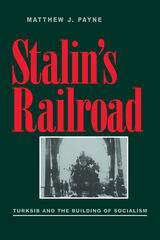
Built between December 1926 and January 1931 by nearly 50,000 workers and at a cost of more 161 million rubles, Turksib embodied the Bolsheviks’ commitment to end ethnic inequality and promote cultural revolution in one the far-flung corners of the old Tsarist Empire, Kazakhstan. Trumpeted as the "forge of the Kazakh proletariat," the railroad was to create a native working class, bringing not only trains to the steppes, but also the Revolution.
In the first in-depth study of this grand project, Matthew Payne explores the transformation of its builders in Turksib’s crucible of class war, race riots, state purges, and the brutal struggle of everyday life. In the battle for the souls of the nation’s engineers, as well as the racial and ethnic conflicts that swirled, far from Moscow, around Stalin’s vast campaign of industrialization, he finds a microcosm of the early Soviet Union.
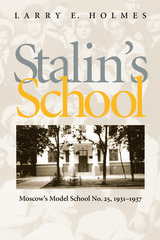
From 1931 to 1937, School No. 25 was the most famous and most lavishly appointed school in the Soviet Union—instructing the children of such prominent parents as Joseph Stalin, head of the Communist Party, Viacheslav Molotov, head of the Soviet State, and Paul Robeson, American actor and singer. Relying on published records, materials in eleven archives, accounts left by visiting foreigners—including the prominent American educator George Counts—and thirty six interviews with surviving pupils from the 1930s, Holmes brings the school to life. The school's administrators, teachers, pupils, friends, and foes become companions as well as objects of this study as we walk the schools halls, enter its classrooms, eavesdrop on feuding officials who debate its fate, and learn something of what the school and the period meant for its youth. Photographs of the school's teachers and students, and reproductions of the students' notebooks, drawings, and watercolors add personality to this compelling story.
Holmes uses the experience of School No. 25 as a microcosm and mirror of Stalinism, illuminating the interplay of state and society in decision making, and providing an opportunity to examine Stalinism from ideological, cultural, and psychological perspectives. While placing the school's history in the context of the coercion, corruption and repression of the 1930s, Holmes challenges the prevailing view that state and public spectacle on the one hand, and society and private life, on the other, were contrasting entities. School No. 25 molded these elements into an organic whole. In the intimate setting of Stalin's School, the degree of acceptance of Stalinism transcends historians' customary reference to the fear or privilege a Soviet citizen experienced. In a mutually reinforcing way, forced compliance and voluntary choice moved individual teachers and pupils to accept a structured environment both at school and in society as the means to a powerful, prosperous, and just Soviet Union.

What led to the breakdown of the Soviet Union? Steven Solnick argues, contrary to most current literature, that the Soviet system did not fall victim to stalemate at the top or to a revolution from below, but rather to opportunism from within. In three case studies--on the Communist Youth League, the system of job assignments for university graduates, and military conscription--Solnick makes use of rich archival sources and interviews to tell the story from a new perspective, and to employ and test Western theories of the firm in the Soviet environment. He finds that even before Gorbachev, mechanisms for controlling bureaucrats in Soviet organizations were weak, allowing these individuals great latitude in their actions. Once reforms began, they translated this latitude into open insubordination by seizing the very organizational assets they were supposed to be managing. Thus, the Soviet system, Solnick argues, suffered the organizational equivalent of a colossal bank run. When the servants of the state stopped obeying orders from above, the state's fate was sealed.
By incorporating economic theories of institutions into a political theory of Soviet breakdown and collapse, Stealing the State offers a powerful and dynamic account of the most important international political event of the later twentieth century.
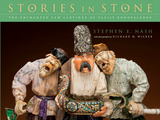
Part art catalogue and part life history, Stories in Stone tells the tale of Konovalenko’s impressive works, explaining their conception, creation, and symbolism. Each handcrafted figure depicts a scene from life in the Soviet Union—a bowman hunting snow geese, a woman reposing in a hot spring surrounded by ice, peasants spinning wool, a pair of gulag prisoners sawing lumber—painstakingly rendered in precious stones and metals. The materials used to make the figurines are worth millions of dollars, but as cultural artifacts, the sculptures are priceless. Author Stephen Nash draws upon oral history and archival research to detail the life of their creator, revealing a rags-to-riches and life-imitates-art narrative full of Cold War intrigue, Communist persecution, and capitalist exploitation.
Augmented by Richard M. Wicker’s exquisite and revelatory photographs of sixty-five Konovalenko sculptures from museums, state agencies, and private collections around the world, Stories in Stone is a visually stunning glimpse into a unique corner of Russian art and cultural history, the craft and science of gem carving, and the life of a Russian artist and immigrant who loved people everywhere.
Co-published with the Denver Museum of Nature & Science, home to the most significant collection of Russian gem-carving sculptures by Vasily Konovalenko in the world.

How should the countries in the Baltic Sea region and their allies meet the strategic challenges posed by an openly aggressive and expansionist Russia? NATO and the nonaligned states in the region are now more concerned about an external threat than they have been since the end of the Cold War. Russia has been probing air space, maritime boundaries, and even land borders from the Baltic republics to Sweden. Russia's undermining of Ukraine and annexation of Crimea worries former Soviet republics with Russian minority populations, nonaligned Sweden and Finland are enhancing their cooperation with NATO, and the Trump presidency has created some doubt about America's willingness to follow through on NATO's collective defense commitment.
Ann-Sofie Dahl brings together an international group of experts to examine Baltic security issues on a state-by-state basis and to contemplate what is needed to deter Russia in the region. The contributors analyze ways to strengthen regional cooperation, and to ensure that security in the region stays at the top of the agenda at a time of many competing strategic perspectives in the transatlantic community. This book will be of great interest to foreign policy and defense practitioners in the US and Europe as well as scholars and students of international relations.
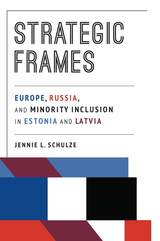
Strategic Frames analyzes minority policies in Estonia and Latvia following their independence from the Soviet Union. It weighs the powerful influence of both Europe and Russia on their policy choices, and how this intersected with the costs and benefits of policy changes for the politicians in each state.
Prior to EU accession, policymakers were slow to adopt minority-friendly policies for ethnic Russians despite mandates from the European Union. These initiatives faced majority opposition, and politicians sought to maintain the status quo and their positions. As Jennie L. Schulze reveals, despite the credit given to the democratizing influence of European institutions, they have rarely produced significant policy changes alone, and then only when domestic constraints were low. Whenever domestic opposition was high, Russian frames were crucial for the passage of reforms. In these cases, Russia’s activism on behalf of Russian speakers reinforced European frames, providing powerful justifications for reform.
Schulze’s attention to both the strategic framing and counter framing of external actors explains the controversies, delays, and suboptimal outcomes surrounding the passage of “conditional” amendments in both cases, as well as the local political climate postaccession.
Strategic Frames offers a significant reference on recent developments in two former Soviet states and the rapidly evolving spheres of political influence in the postindependence era that will serve students, scholars, and policymakers alike.


More than anyone else in his time, Struve was the master of history, journalism, economics, international relations, and practical politics. A scholar and activist, he helped found the Marxist movement in Russia, initiated Marxist Revisionism there, and launched Lenin's career, and he was the theoretician and a cofounder of the Constitutional Democratic Party.
In writing about Struve, Richard Pipes turns biography into history. He lays bare the split soul of the Russian intellectuals--their irresponsibility, unwillingness to compromise, intolerance. Struve, the liberal turned conservative, preached to his countrymen physical and spiritual freedom based on law. He was a Westerner in his championing of social reform, legality, private property, and a vigorous state and foreign policy. This long and rich tradition of liberal-conservatism is recounted against the background of a "monstrous growth of political claims on the individual that caused intellectual and moral independence increasingly to be punished with ostracism, confinement, exile, and death."

"Nobody has yet produced a more perceptive and inclusive work on the events of what is arguably the most important year of our lifetimes. This book is essential for anyone with an interest in Eastern Europe, radical social change, or post-bipolar global politics."—Joel M. Jenswold, Social Science Quarterly
"Brown has been a close observer of the region for decades, and the breadth of his knowledge and the acuity of his judgments are evident throughout."—Michael Bernhard, Political Science Quarterly
"There is no surer guide than Brown to an understanding of these events, and no one better qualified to describe the complex and daunting problems facing the new non-communist governments."—John C. Campbell, Foreign Affairs
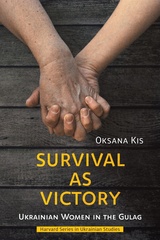
Of the hundreds of thousands of Ukrainian women were sentenced to the Gulag in the 1940s and 1950s, only half survived. In Survival as Victory, Oksana Kis has produced the first anthropological study of daily life in the Soviet forced labor camps as experienced by Ukrainian women prisoners.
Based on the written memoirs, autobiographies, and oral histories of over 150 survivors, this book fills a lacuna in the scholarship regarding Ukrainian experience. Kis details the women’s resistance to the brutality of camp conditions not only through the preservation of customs and traditions from everyday home life, but also through the frequent elision of regional and confessional differences. Following the groundbreaking work of Anne Applebaum’s Gulag: A History (2003), this book is a must-read for anyone interested in gendered strategies of survival, accommodation, and resistance to the dehumanizing effects of the Gulag.
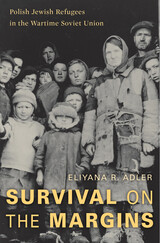
Co-winner of the Yad Vashem International Book Prize for Holocaust Research
The forgotten story of 200,000 Polish Jews who escaped the Holocaust as refugees stranded in remote corners of the USSR.
Between 1940 and 1946, about 200,000 Jewish refugees from Poland lived and toiled in the harsh Soviet interior. They endured hard labor, bitter cold, and extreme deprivation. But out of reach of the Nazis, they escaped the fate of millions of their coreligionists in the Holocaust.
Survival on the Margins is the first comprehensive account in English of their experiences. The refugees fled Poland after the German invasion in 1939 and settled in the Soviet territories newly annexed under the Molotov-Ribbentrop Pact. Facing hardship, and trusting little in Stalin, most spurned the offer of Soviet citizenship and were deported to labor camps in unoccupied areas of the east. They were on their own, in a forbidding wilderness thousands of miles from home. But they inadvertently escaped Hitler’s 1941 advance into the Soviet Union. While war raged and Europe’s Jews faced genocide, the refugees were permitted to leave their settlements after the Soviet government agreed to an amnesty. Most spent the remainder of the war coping with hunger and disease in Soviet Central Asia. When they were finally allowed to return to Poland in 1946, they encountered the devastation of the Holocaust, and many stopped talking about their own ordeals, their stories eventually subsumed within the central Holocaust narrative.
Drawing on untapped memoirs and testimonies of the survivors, Eliyana Adler rescues these important stories of determination and suffering on behalf of new generations.
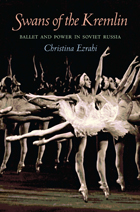
Swans of the Kremlin offers a fascinating glimpse at the collision of art and politics during the volatile first fifty years of the Soviet period. Ezrahi shows how the producers and performers of Russia’s two major troupes, the Mariinsky (later Kirov) and the Bolshoi, quietly but effectively resisted Soviet cultural hegemony during this period. Despite all controls put on them, they managed to maintain the classical forms and traditions of their rich artistic past and to further develop their art form. These aesthetic and professional standards proved to be the power behind the ballet’s worldwide appeal. The troupes soon became the showpiece of Soviet cultural achievement, as they captivated Western audiences during the Cold War period.
Based on her extensive research into official archives, and personal interviews with many of the artists and staff, Ezrahi presents the first-ever account of the inner workings of these famed ballet troupes during the Soviet era. She follows their struggles in the postrevolutionary period, their peak during the golden age of the 1950s and 1960s, and concludes with their monumental productions staged to celebrate the fiftieth anniversary of the revolution in 1968.
READERS
Browse our collection.
PUBLISHERS
See BiblioVault's publisher services.
STUDENT SERVICES
Files for college accessibility offices.
UChicago Accessibility Resources
home | accessibility | search | about | contact us
BiblioVault ® 2001 - 2024
The University of Chicago Press





